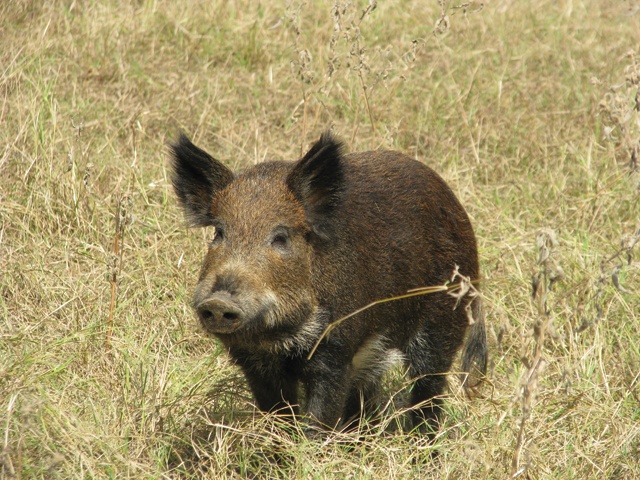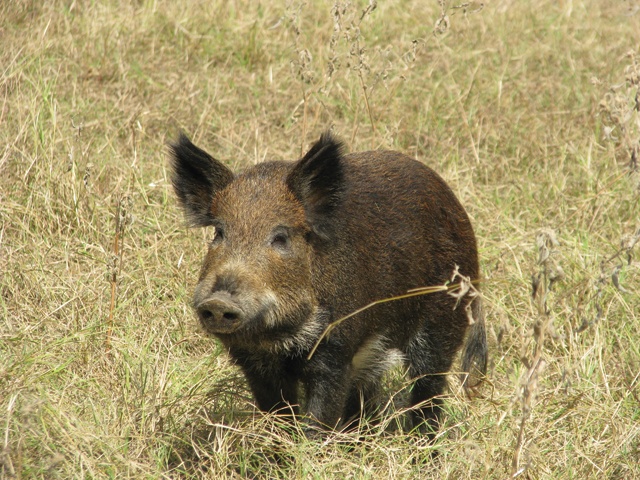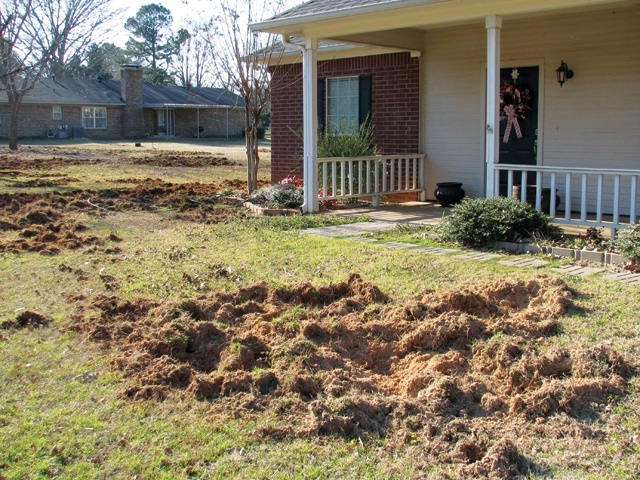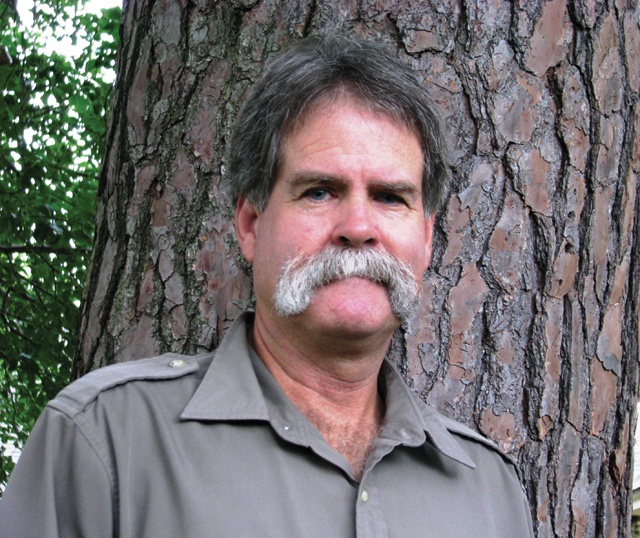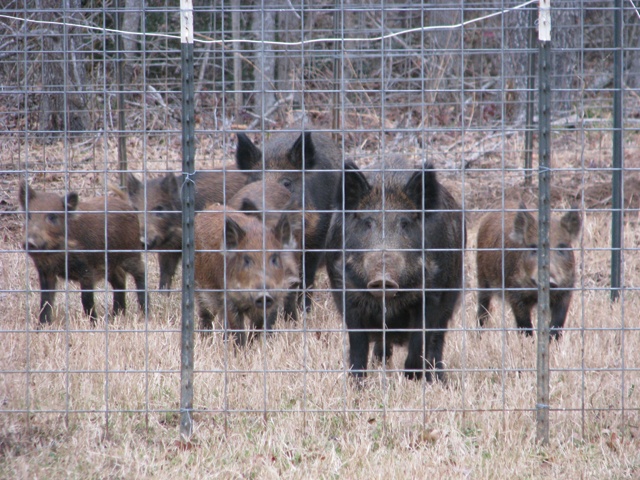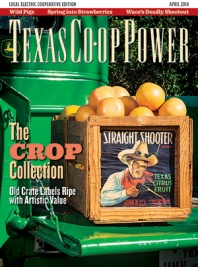… now we could do it with conventional weapons
but that could take years and cost millions of lives …’
Eric ‘Otter’ Stratton in ‘Animal House’
It’s a situation ripe for bad puns and hyperbolic prose, for manic ravings about the havoc the invasion is wreaking and the inevitable “what if” musings of politicians, landowners and wild-animal watchers.
But whatever we call it—the “zombie aporkalypse”—and however we choose to label their coming, the wild pig population explosion plaguing Texas and 35 other states is real. The feral, or wild, pig population in the U.S. is estimated at 4 million to 5 million animals, with at least half of them in Texas. It’s advancing in long, rapid strides, and it’s threatening much more than a few farms.
Golf courses and backyards, creek drainages and corn fields, even high-speed highway traffic are affected as marauding groups—sounders—of wild pigs exit the dark of the woods, thickets and brush country and move ever closer to roads, towns and subdivisions. The resulting clashes cost $50 million annually in crop and pasture damage and an estimated $500 million in annual statewide economic losses, according to the Texas A&M Agrilife Extension Service.
“I always say there are two kinds of landowners in Texas,” says Billy Higginbotham, an AgriLife Extension biologist in Overton, “those that have pigs and those that are going to have pigs. We have an estimate of about 2.6 million wild pigs in Texas. That’s with a margin of error of half a million on either side.”
Make no mistake, this is a mess:
• Wild pigs have been documented in 253 of Texas’ 254 counties. Only El Paso County has no confirmed population.
• “We estimate that population growth is occurring in Texas at the rate of about 21 percent a year,” Higginbotham says.
• Unless the overall population of wild pigs is reduced by at least 70 percent per year, every year, the numbers will continue to increase, and the space those pigs occupy will increase with it, Higginbotham says.
When pigs, which are omnivorous, root in pastures and fields or yards—they eat grasses, roots and tubers, shoots, acorns, fruits, bulbs and mushrooms—they dig up broad expanses of the land, leaving holes that can be more than a foot deep. When that ground hardens, especially after a rain, the bumpy texture is hard on tractors, tillers and mowers. If that ground is planted, the crops are destroyed. Rebuilding a pig-damaged golf course can cost $30,000 to $40,000 for a single green.
Higginbotham, “Billy Pigs” to his friends, has spent many of his 33 years with the extension service studying wild pigs and their spread in Texas. He’s come to believe that the animal, for years referred to as a feral hog, is something more. “People ran their pigs in the woods well into the 1960s, and some of them ran wild. Those [formerly domestic pigs] were feral,” he says. “Now we have so many, and they’ve established themselves so well that we should call them wild pigs.”
They’ve shown a remarkable ability to live in the deepest, darkest parts of Texas river bottoms, in arid deserts and even in states where snow might reach their backs at times. “This is the most prolific large animal on the face of the earth,” Higginbotham says. “They’re not born pregnant—but it’s close.”
There’s an old saying, attributed to veteran Texas wildlife biologist David Whitehouse, that the average litter for a wild sow is five to six pigs—and eight survive. That isn’t far from the truth.
Once a baby pig reaches 12 to 15 pounds, there’s virtually nothing that preys on it other than bullets and bumpers. The females among those young pigs begin breeding at just over a year and can deliver as many as two litters a year during a four- to eight-year lifespan.
Wild pigs are also aggressively adaptive to multiple environments and seem to keep finding new terrain to take over. Their presence is noxious, especially
to white-tailed deer, one of the major cash crops for rural Texas landowners. Landowners who lease access to their property each fall to hunters take in close to $1 billion. “They are an exotic, invasive animal that’s in direct competition with deer,” Higginbotham says.
Pigs thrive along rivers and creeks. State officials are beginning to worry about the animal’s effect on water quality.
“It’s a pretty big problem here,” says Richard Parrish, a Hays County AgriLife Extension agent. “We have yards and pastures dug up by pigs. We’re also seeing rooting in creekside areas, and that’s creating water-quality and environmental problems.”
Wild pigs can carry at least 15 known diseases, the most damaging of which are pseudo rabies and swine brucellosis. Neither affects the quality of the meat, should it be eaten, but brucellosis can migrate to humans through a cut in the skin and cause lingering flu-like symptoms.
Parrish, a member of Bluebonnet Electric Cooperative, says his county and others have instituted bounty programs to induce more lethal control of wild pigs and provided continuing education. Landowners are taught how to trap and shoot wild pigs effectively and learn ways to protect their land.
Biologists say it doesn’t matter how many pigs we have as much as how many we kill. We need to kill lots of them.
Jared Timmons, who until recently worked as an AgriLife Extension associate, helped landowners ward off high E. coli numbers and nutrient loading in water sources, such as Plum Creek in Hays and Caldwell counties, due to swine feces. “The Plum Creek Watershed Partnership was one of the first ever to implement a watershed protection program that included feral pigs,” Timmons says. “We’ve not been able to show that Plum Creek water quality has been impacted, but there are other problems with that area. It depends on the property.”
Timmons says some landowners have been able to reduce populations of wild pigs in urban areas, especially the green spaces and creeks where pigs travel, with extensive use of circle traps and aerial gunning where appropriate. Circle traps are large, round enclosures made of heavy wire to capture an entire sounder.
“Pigs have been on the radar here for a long time,” says Nick Dornak, the Plum Creek Watershed coordinator who has been working with the Caldwell County Feral Hog Task Force and individual landowners who are experiencing wild pig damage. “They are one of a variety of water-quality issues that cause the creek not to meet its best use.”
“The response to the feral hog pandemic has not been on the radar of governments and funding entities until recently,” Dornak says.
Working with a $30,000 grant from the Texas Department of Agriculture and $50,000 in matching funds provided by local governments and landowners, Dornak has helped develop a wild pig action plan as a partnership between Hays and Caldwell counties. One aspect of that plan is a bounty for killing pigs.
The bounty pays $5 for a tail from a dead wild pig or a receipt from a certified holding facility that takes the animal before its slaughtered and processed into meat by a commercial pork processor. Dornak says that resulted in 1,000 pigs killed in 2012.
Texas law allows permitted individuals to capture pigs and hold them for a short time before delivering them to federally inspected processors with proper permits. The meat is often sold overseas as “wild boar” and is quite popular, Higginbotham says.
The Caldwell County Feral Hog Task Force is buying drop nets to aid landowners and contracting with commercial trappers to remove pigs from suburban areas. “We’re hoping for 6,000 to 7,000 pigs per year, but we have a very smart animal, and we’ll be lucky to slow the growth, much less cut into the growth,” Dornak says.
Landowners can see the changes that wild pigs have brought to their land. “I’ve got a lot of hogs,” says Larry Lindsey, a Bluebonnet Electric Cooperative member who owns 640 acres in Caldwell County. “I didn’t see many pigs when I first bought the place, and I have 300 acres high-fenced. I managed to keep them out of there for five or six years, but over the years, they’ve managed to get through the fence into that part of the ranch.”
Lindsey suffers mostly pasture damage from the pigs on his land, but he knows they cause considerable damage to roads, crops and fields for landowners everywhere. “I have 15 tails in my freezer right now, just from picking them off myself,” he says. “I kill about 90 pigs during a 12-month period. They’re mostly nocturnal now. I think a lot of times, we just push them over to a neighbor who’s not doing much to control them.”
That would be normal for most landowners, many of whom think they don’t have many wild pigs or who aren’t diligent about controlling them by any means possible. “They’re a huge problem, but I’ve kind of learned to live with them,” says Stan Graff, who owns a large ranch in Red River County in North Texas.
“They’re more of a nuisance because of the damage they do to Coastal [Bermuda, a common pasture grass] fields. It’s really hard on machinery,” says Graff, a member of Lamar County Electric Cooperative Association. “But there’s been a resurgence of row crops around us, and that has them leaving us in the summer and going to our neighbors.”
Graff has used circle traps to capture pigs in the past, and he issues orders for any hunters on his ranch to shoot them on sight. “There were no pigs when I first bought the ranch in 1982. We saw our first hog about 10 years ago during a deer survey,” he says. “By the third year, we were shooting and trapping about 100 a year, and now it’s more than 200 each year. But that’s not doing much good.”
That is Higginbotham’s point. Wild pigs are prolific, smart and able to leap tall buildings in a single bound.
The Texas Legislature in 2011 passed what’s come to be known as the “Pork Chopper” bill, legislation that allows landowners to sell seats on permitted helicopters for hunters who want to shoot pigs from the air. The money helps offset the cost of the helicopter time.
By 2012, more than 24,000 pigs were killed by aerial gunning, a number Higginbotham says will grow. And commercial pig processors took in about 640,000 pigs between 2004 and 2009, he says.
“Wild pigs are no longer just a rural issue,” Higginbotham says. “They’ve come to town, and they’re showing up on lawns and golf courses. They can be a significant presence and never be seen in the daytime. We’re always going to be managing pigs in Texas, so landowners have to be willing to use the best management practices. Pigs are here to stay.”
——————–
Mike Leggett is the former outdoors writer for the Austin American-Statesman.
